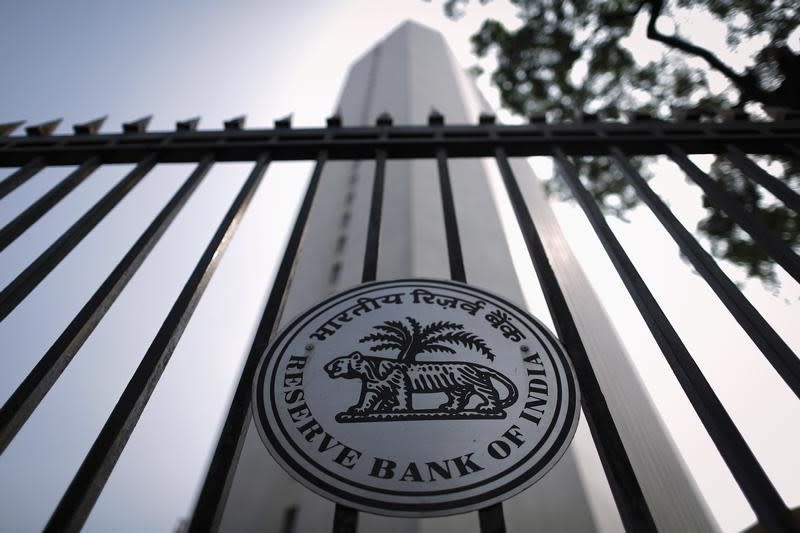RBI eases inflation tone, loosens credit in gesture to Modi
By Suvashree Dey Choudhury and Rafael Nam
MUMBAI (Reuters) - Reserve Bank of India (RBI) governor Raghuram Rajan on Tuesday eased rules to spur bank lending and toned down his inflation rhetoric in moves set to be welcomed by a new pro-business government determined to revive economic growth.
The RBI, which kept interest rates on hold at 8 percent as widely expected, also hinted it would not raise rates as long as inflationary pressures continued to ease.
The loosening in credit and the central bank's surprisingly dovish remarks on inflation will put the onus on the new government to stick to conservative fiscal spending and broader reforms to get Asia's third-largest economy back on track, economists said.
(Read what experts are saying about the RBI's rate decision, click http://reut.rs/1jNPkLk)
The decisions from the RBI were widely seen as pragmatic moves. Rajan has placed fighting inflation at the top of his agenda, for which he will need the support of Narendra Modi, India's popular new prime minister.
In turn, investors are hopeful the new government will respond by narrowing the fiscal deficit and tackling the supply-side factors that drive up food inflation in India, thus easing the burden on the poor and restoring investors' confidence.
"If the economy stays on this course, further policy tightening will not be warranted," Rajan said in the RBI statement, referring to the moderating inflation trend.
The central bank governor added that the Modi-led victory in elections last month could help "create a conducive environment for comprehensive policy actions and a revival in aggregate demand as well as a gradual recovery of growth."
The governor's dovish tone on inflation sparked a rally in bonds and raised expectations the central bank could even ease monetary policy as early as this year.
The benchmark 10-year bond yield was trading at 8.60 percent at 3:00 p.m., down 13 basis points from the day's high after earlier hitting a more than four-month low. The yield had closed at 8.66 percent on Monday.
Rajan's increased comfort on consumer price inflation - which cooled in 2014 from the near 10 percent level in the two previous years - could allow him to take steps to improve growth after raising interest rates by a total of 75 basis points since September. Its last tightening move was in January.
Analysts say a concerted effort by the government could help the RBI meet its target to bring down CPI inflation to 8 percent by January 2015 and 6 percent the following year.
Although the RBI has a wide latitude in setting monetary policy, it is not statutorily independent and has to consult with the finance minister before taking a decision.
ENHANCING CREDIT
On Tuesday, the RBI supported the Modi government in bolstering growth by enhancing credit available by banks.
The RBI announced a reduction in the mandatory amount of bonds lenders must park at the central bank - called the statutory liquidity ratio (SLR) - by 50 basis points to 22.5 percent of deposits, starting in mid-June.
The RBI also reiterated its focus on further developing money markets as a key way to ensure cash in the banking system flows to productive sectors, moving away from its piecemeal approach to injecting liquidity or to specific sectors.
Among the measures on Tuesday, the RBI reduced the liquidity provided to exporters while pledging to provide additional cash via term repos - or cash for loan transactions.
"The central bank is aware that the economy needs an impetus and the RBI is ensuring through its measures today that liquidity remains a potent tool to revive growth in the real economy," said Soumya Kanti Ghosh, chief economic adviser at State Bank of India.
It also relaxed rules on overseas remittances, allowing Indians to move up to $125,000 from $75,000 after the exchange rate stabilised. The central bank also allowed foreign investors to participate in domestic exchange traded currency derivatives.
The Royal Bank of Scotland said in a research note the increase in annual remittances and trading rules reflected the RBI's confidence on India's external position.
The concerted efforts by Rajan are likely to be welcomed by Modi and his government, after the Bharatiya Janata Party trounced the Congress party in elections last year with a pledge to create jobs and revive an economy that has grown below 5 percent for two consecutive years.
But Modi, and his finance minister Arun Jaitley, will need to deliver as they face a slew of potentially competing challenges, from containing price pressures to upholding fiscal discipline.
A key signal of its intentions will be known mostly in July when the new government is set to unveil a new budget.
(Editing by Jacqueline Wong)

 Yahoo Finance
Yahoo Finance 

